
|

|
|
Home Site Search Contact Us Subscribe
|
|
Raw Elegance in Black and White: Q&A with JoAnn Locktov The editor and publisher of "Dream of Venice in Black and White" talks about her creative process and strategies in creating the third book in the "Dream of Venice" trilogy. By Saxon Henry February 21, 2019 As someone who is rarely on the other side of the journalist’s pad, I am uninitiated when it comes to being interviewed. This is not the case for publisher JoAnn Locktov, who intrigued me recently when she admitted there are questions she has never been asked about the choices she made as the editor of Dream of Venice in Black and White. I welcomed the chance to delve into these, as I knew each would highlight her creative process as she was strategizing and creating the third in her Bella Figura Publications trilogy.
The opportunity to once more pour over the beautiful black and white imagery was a bonus. I’ve leafed through it many times, identifying which images I’d love to frame for my own rooms. The fact that a number of the photographers listed on the Dream of Venice in Black and White page on her website sell images makes this book a remarkable resource for interior architects, designers, and photography lovers looking to include framed photographs in their interiors.
Saxon Henry: Why did you choose to publish a book in black and white that represents a city noted for her colors?
JoAnn Locktov: I’ve always loved the raw elegance of black and white, whether it was street or fine art photography. There is timelessness to black and white that perfectly reflects the enduring seduction of Venice. Each book in the Dream of Venice trilogy has taken on a greater sense of urgency, as dire over-tourism continues unabated. We often think of black and white photography as implicating a certain truth. Devoid of the distraction of color, I wanted to this book to command attention.
SH: How were the photos chosen?
JL: I used several criteria to choose the images. The first was simply composition. The second was a bit more visceral: did the image provoke an emotional response; what did I feel when looking at the photograph? If the answer was nothing, the image did not proceed to the final benchmark, which was narrative. I was looking for photographs that traversed time, in the sense that although an image is one moment in time, I was watching an entire story unfold. The Venice of Calvino, Brodsky, and Scarpa does still exist if you deliberately try to find her. These images are a reminder of what we are at risk of losing, unless there is a radical intervention.
SH: Who is Živa Kraus and how is she involved with the book?
JL: Živa Kraus is originally a painter from Croatia who came to Venice almost 50 years ago. After working with Peggy Guggenheim, she dedicated her life’s work to photography. She wrote an essay for the book, which includes her profound conviction: “The camera always sees the interior of the person behind the lens. Any photographer sees as much light as he has within himself.”
In Venice, her not-for-profit gallery, Ikona Venezia, has exhibited many of the most important photographers of the last four decades, in addition to hosting international conferences, and workshops. It is my hope that the book will also bring new visitors to her influential gallery.
A percentage of every book sold will be donated to the gallery. A percentage of sales from Dream of Venice, the first book in the series, goes to Save Venice, Inc., a U.S.-based non-profit dedicated to preserving the artistic heritage of Venice. A percentage of sales from Dream of Venice Architecture, the second book in the series, is being donated to the Fondazione Querini Stampalia, in Venice.
SH: Why did you choose the cover image?
JL: The cover image by Lisa Katsiaris was shot at dusk in a perfect storm of time, location, and weather. It is a surreal representation of the city as a dream state, suspended in time. In the foreground are the bricole, the wooden poles that have been used for navigation in the lagoon since the 15th century. I believe they represent the perfect synergy between the Venetians and the water that surrounds them. For me, they are an iconic symbol of a relationship in perpetuity. Il Redentore, the 16th century Palladian church, rises out of the mist, reminding us that Venice was born from the water, not land. She began with nothing, and became everything.
SH: Who is Gianni Berengo Gardin and why is the book dedicated to him?
JL: Gianni Berengo Gardin is a Venetian photographer, now in his eighties, who has become intrinsic to Italy’s collective consciousness. His captivating and controversial work has always contained the vital element of truth. In 2015, his “Venezia e le Grandi Navi” exhibit documented the cruise ships obliterating Venice and her lagoon. The images brought worldwide attention to the destructive sea monsters. In studying his work, Berengo Gardin taught me about the strength of black and white photography as an arbiter of humanity. The dedication was my way of acknowledging the spirit and significance of his work. SH: Tell us about the photographers.
JL: There are 56 photographers in the book, and they come from 10 different countries. They are both professionals and amateurs. I made no distinction. The process of discovering talent is one of the most joyous and gratifying responsibilities I have as an editor. My choice for inclusion was based on the photograph and not the quality of the camera or the career goals of the photographer.
SH: Who is Tiziano Scarpa and why did you want to work with him?
JL: Twenty years ago, when I first discovered Venice, I also discovered the work of Tiziano Scarpa. He had written Venice Is A Fish, an irreverent and intimate non-guide to Venice. It is Tiziano who famously observed, “Getting lost is the only place worth going to.” His writing is often untethered from the mundane physical aspects of life, and floats above us like a convergence of mischievous putti. There are many Italian authors who have written about Venice, but it takes a Venetian to fully understand the crevices between her stones.
Author, journalist, and content strategist Saxon Henry has been writing for the design and architecture industries for more than 20 years. Her byline has appeared in a wide variety of national shelter publications, as well as in The New York Times, The Wall Street Journal, and Robb Report. The author of Stranded on the Road to Promise, Anywhere But Here, and Four Florida Moderns: The Architecture of Alberto Alfonso, René González, Chad Oppenheim, and Guy Peterson, publishes creative essays on Medium and on her blog, The Modern Salonnière, on SaxonHenry.com. Born in Chattanooga, Tennessee, she considers herself a southern writer, though one who was universalized while living in New York City for nearly two decades and during numerous trips abroad.
Photographers featured in this article:
Olinda Adeane: https://www.instagram.com/oadeane_/
Fabio Bressanello: http://www.bressanelloartstudio.it/
Pietro De Albertis: http://www.pietrodealbertis.it
Lisa Katsiaris: https://www.lisakatsiarisphotography.com
Eugenio Novajra: http://www.eugenionovajra.com/
Martin Pietropoli: https://medium.com/lindice-totale
Robert Schonfeld: https://www.instagram.com/seeing_while_blind/?hl=en
Fabio Sguazzin: https://www.facebook.com/lanostravenezia
Eva Sipola: https://biankonera.com/
Annik Susemihl: http://annik-susemihl.de
Giulio Zanni: https://www.giuliozanni.com/ |
(click on pictures to enlarge) 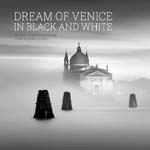 Lisa Katsiaris The ethereal cover of “Dream of Venice in Black and White,” photographed by Lisa Katsiaris. 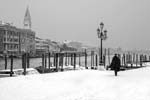 Fabio Bressanello Fabio Bressanello, 2018, Untitled 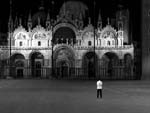 Eugenio Novajra Eugenio Novajra, 2017, The Great Beauty 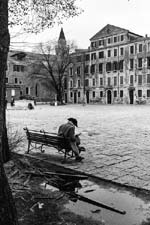 Pietro De Albertis Pietro De Albertis, 2013, L’attesa 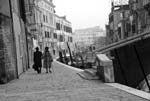 Robert Schonfeld Robert Schonfeld, 2008, After Church, Cannaregio  Annik Susemihl Annik Susemihl, 2017, Daily Work 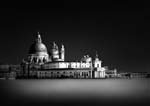 Giulio Zanni Giulio Zanni, 2016, Salute  Fabio Sguazzin Fabio Sguazzin, 2016, Caffè Florian 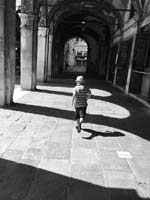 Olinda Adeane Olinda Adeane, 2017, Un appuntamento urgente  Eva Sipola Eva Sipola, 2017, Palazzo Franchetti reflected 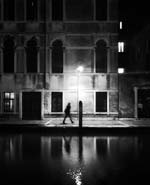 Martino Pietropoli Martino Pietropoli, 2017, 7 PM  JoAnn Locktov (left) signing books in Venice with photographer Michela Ceola. |
© 2019 ArchNewsNow.com